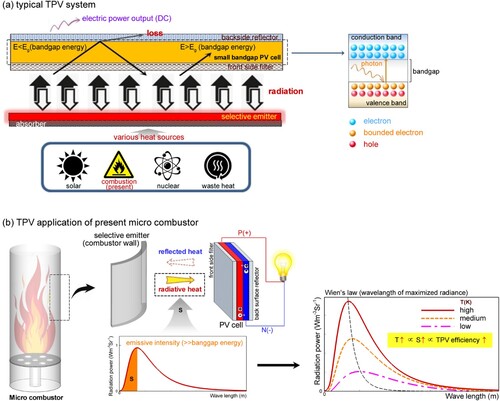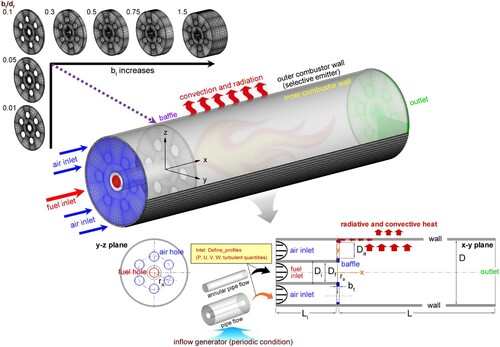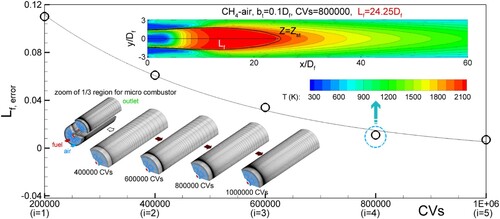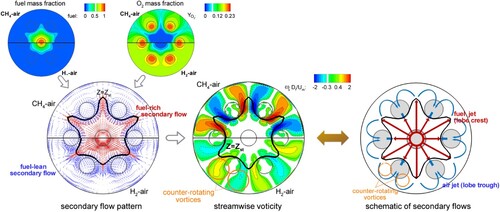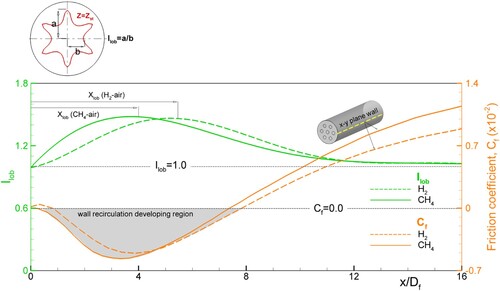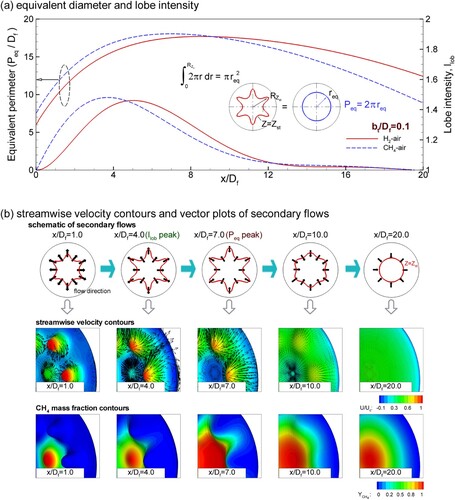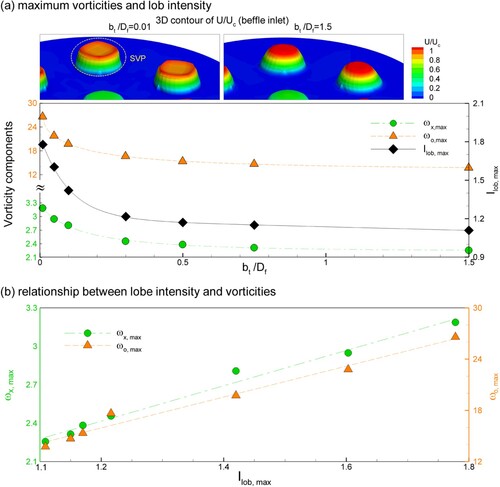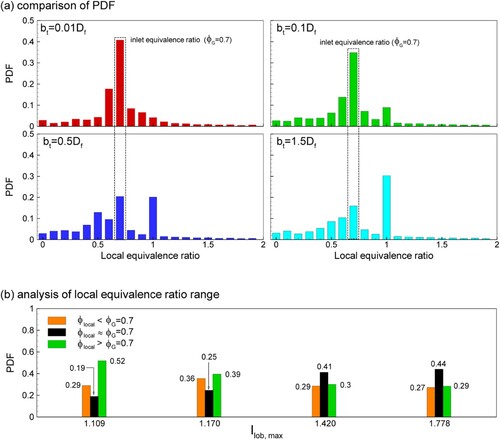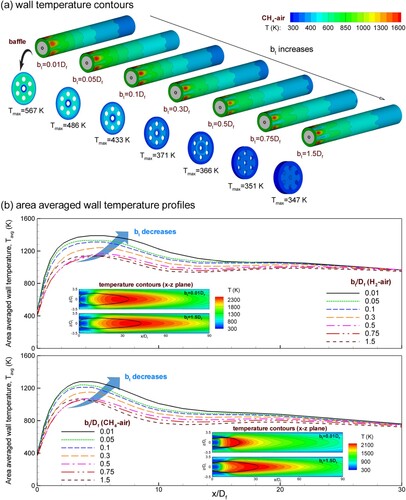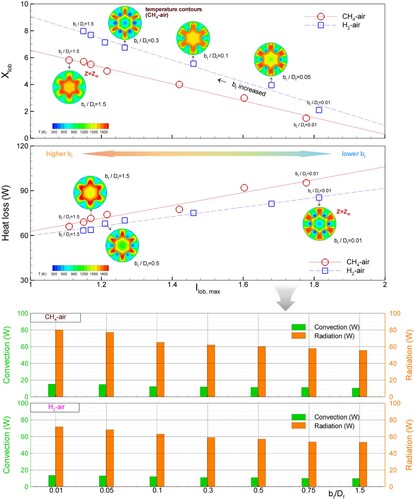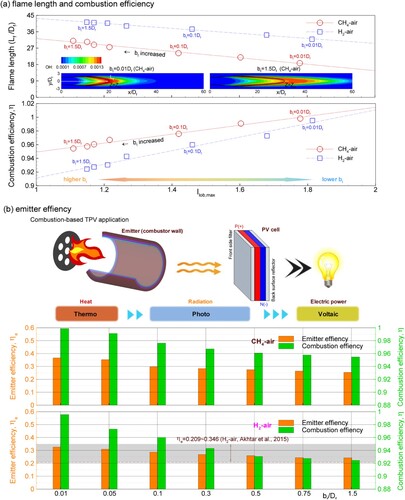Figures & data
Table 1. Geometric conditions.
Table 2. Inlet conditions of ϕG = 1.0.
Table 3. Boundary conditions of multihole baffled micro combustor.
Table 4. Comparison of CH4–air and H2–air combustion.
Figure 4. Comparison of temperature profiles along center axis between predicted result and experimental data: dependency of (b) turbulence models, and (c) chemical kinetic models.
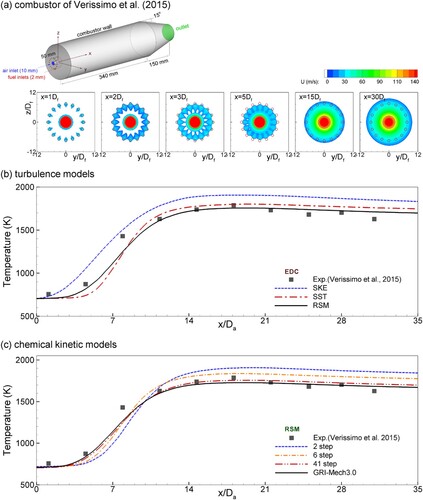
Figure 5. Recirculation zone characteristics, 3D contours, and axial distributions along the centerline of streamwise velocity (bt = 0.1Df).

Figure 6. Velocity vectors and temperature contours (CH4–air, bt = 0.1Df) The black solid line represents Z = Zst.
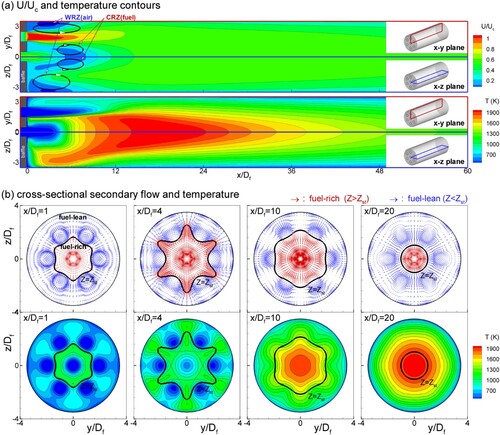
Figure 7. Comparisons of streamwise and azimuthal vorticities at x/Df = 1.0, 2.0, 4.0, and 8.0 (bt = 0.1Df).
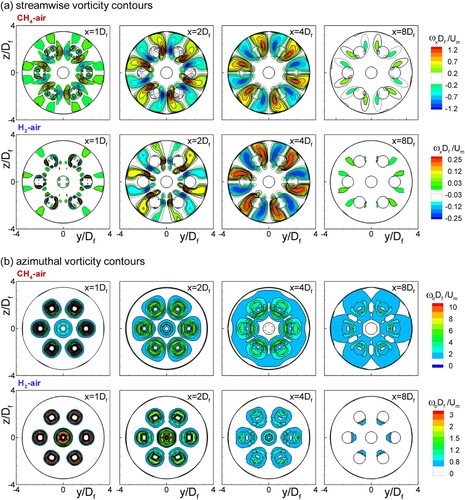
Figure 8. Streamwise vorticity magnitude variation with streamwise vorticity contours of AOA’ plane (CH4–air, bt = 0.1Df).
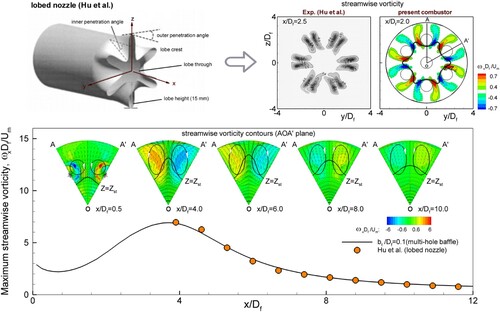
Figure 9. Temperature contours at several streamwise locations with iso-surface contour of Z = Zst (CH4–air and H2–air, bt = 0.1Df).
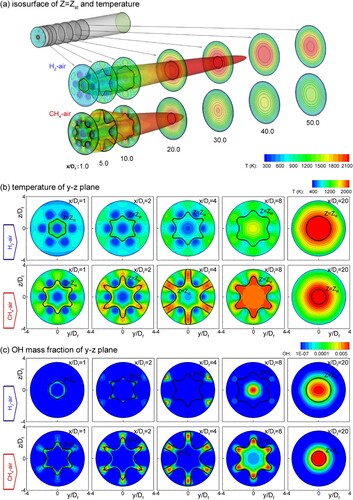
Figure 10. Axial distributions of temperature and mass fractions of reactants and products (CH4–air and H2–air, bt = 0.1Df).

Figure 11. Streamlines, velocity vectors, and contours of temperature and OH mass fraction for different baffle conditions (CH4–air, bt = 0.1Df).


